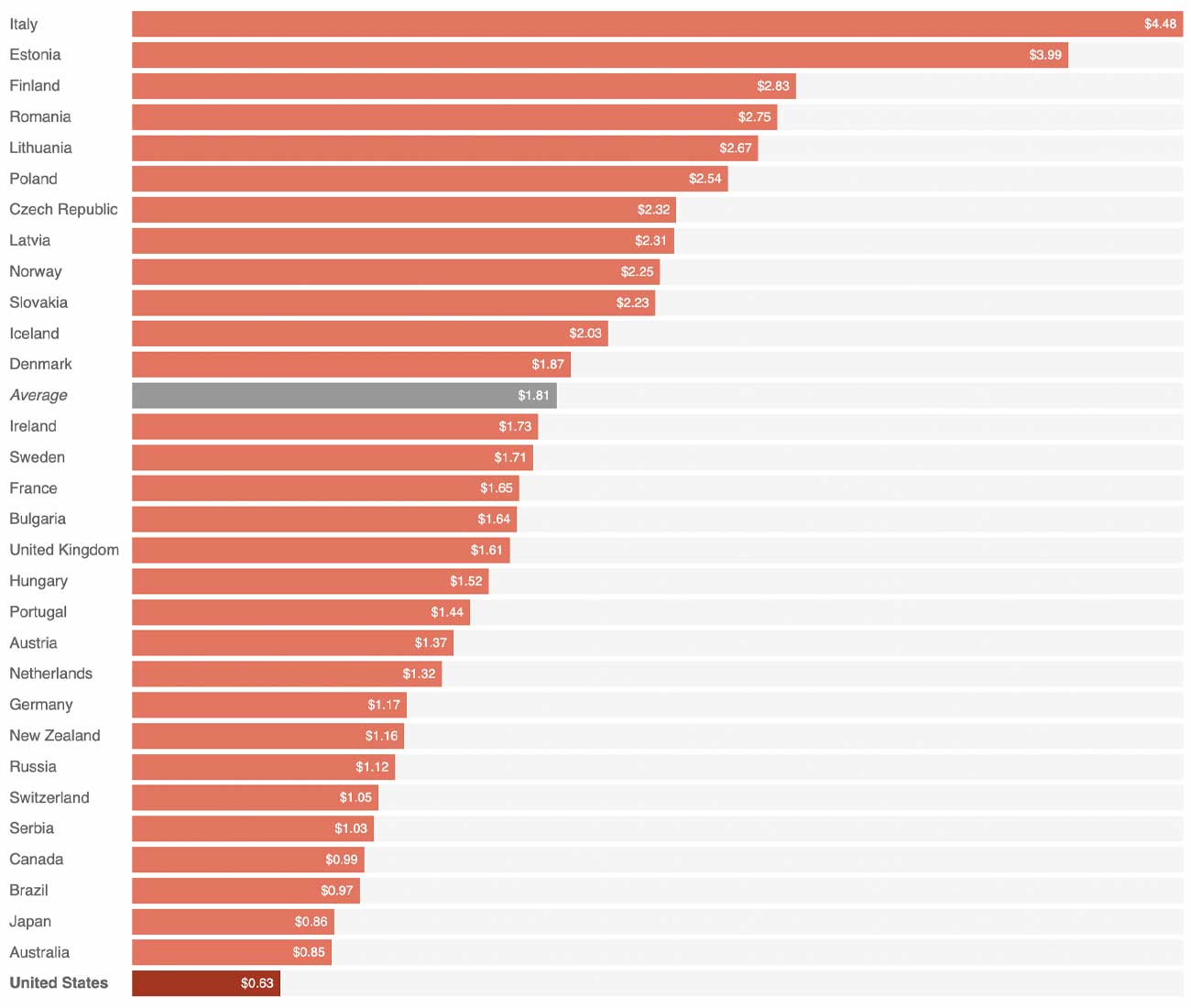12/28/24
The cost of a Forever postage stamp has just gone up, under a U.S. Postal Service plan to boost the price of the first-class stamp to 73 cents from 68 cents — a price that was just raised in January.
The 5-cent increase went into effect on Sunday — now the the sixth price hike since January 2021.
Despite the string of increases, the U.S. Postal Service Office of the Inspector General says a U.S. postage stamp remains a bargain in the global marketplace, citing much higher prices in Europe and other areas (more on that below).
The U.S. Postal Service has been criticized in recent years as it resorted to measures such as slowing down the mail in response to its financial problems. Last year, the Government Accountability Office credited the agency with making some improvements, but it added that USPS "should continue taking steps to restore its financial viability and Congress should consider additional changes to USPS's unsustainable business model."
Are U.S. stamps still a good deal?
The price of a first-class stamp is cheaper in the U.S. than many other developed countries, according to a recent ranking by the USPS Office of the Inspector General, or OIG.
The office compared the U.S. to 30 other nations that were selected by country size and postal service revenue, as well as the ability to source reliable data. The list includes much of the European Union, along with countries such as Canada, Japan, Brazil and Russia.
In raw numbers, only four countries had cheaper stamps than the U.S. And while many postal services have raised prices in recent years, the U.S. increases were moderate compared to most nations in the sample.
"The price of a [USPS] stamp increased by 26 percent from June 2018 to June 2023 ($0.50 to $0.63)," the inspector general report states, "which is less than half of the average increase for our sample size (55 percent) during that period."
When the OIG adjusted its analysis for purchasing power parity — a currency conversion rate used to compare the relative affordability of goods in different countries — the U.S. had the lowest stamp price of the 31 postal services.
How stamp prices in the U.S. and other countries compare (adjusted)
The U.S. Postal Service Office of the Inspector General ranked 31 countries by the price of mailing a standard domestic letter in June 2023, adjusted for purchasing power parity. The metric accounts for the cost of living and other factors to compare how affordable stamps are in different countries.
Why do stamp prices keep going up?
You're not imagining it: Stamp prices have gone up more frequently, and by greater amounts. And inflation is only part of the story.
"The Postal Service increased the price of [first-class mail] 18 times since January 2000," according to the OIG report, "and has raised prices more frequently in recent years, increasing prices five times between January 2021 and January 2024."
The use of first-class mail, the Postal Service's main revenue driver, has long been in decline. In July 2007, the agency's volume of single-piece first class mail — things like bill payments, letters and cards — stood at 2.7 billion items. By June 2023, that volume had fallen by 68%, to 900 million.
That's not to say domestic first-class mail isn't profitable. In fiscal year 2022, its "cost coverage" topped 210%, "meaning its generated revenue was more than twice its attributable cost," according to the inspector general.
But the agency's costs have been rising. So while the cost of stamps was once largely linked to inflation, USPS now uses several criteria in its formula for raising prices, under rules that were eased in November 2020. The pricing equation now includes things like density: the Postal Service's need to deliver less mail — but to more addresses.
The rate hike also takes into account the agency's obligation to pay its retirees' pension and health benefits, an expense that is responsible for more of the new proposed rate hike than is inflation.
"This retirement rate authority is only available for 5 years," a USPS spokesperson told NPR, adding that 2024 "is the fourth year where the retirement authority would be utilized."


